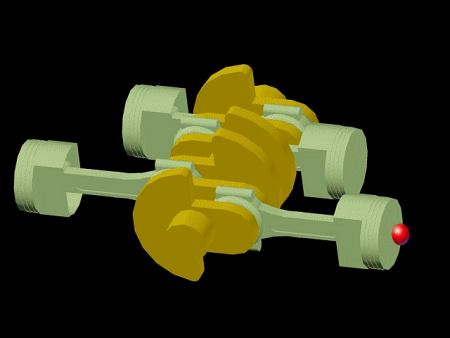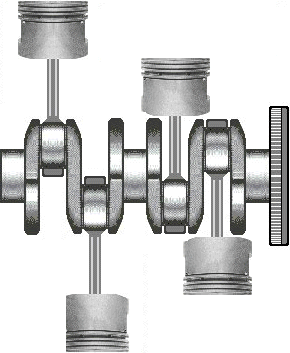
|
Opposed Four-cylinder Engine

Function
The four-opposed-cylinder engine avoids empty strokes completely, exactly like the four cylinder in-line engine. A big advantage is, though, that the second order mass balances caused by the connecting rod position
are also avoided. Thus the counterbalances shown in the figure below become obsolete.
Other advantages:
- Quiet engine run,
- Small length,
- Low centre of gravity in the vehicle.

How it works
Two times two opposite pistons move away from one another or towards each other, hence, the name opposed cylinder engine or counter direction engine. The cylinder angle is basically 180°, the firing orders are
'1432 or '1234'. So, 1 and 3 are fixed. Another firing order is possible if the engine manufacturer does not keep to the standard of the cylinder numbering. The crankshaft is almost always triple, possibly also five-
bearing. An exception is the four-bearing of the VW Beetle engine because in this case one more main bearing is counted, positioned outside.

Disadvantages
A bigger construction expenditure is necessary for two cylinder heads. Because of the construction width the opposed cylinder engine is not really suitable for cross mounting. A double overhead camshaft engine,
opposed cylinder or (real) V engine, features not two but four overhead camshafts.
Comparison
Because today the same engines are used in different model ranges, the in-line engine has asserted itself. It is more universal and cheaper for production. Also it can easily be extended, e.g., by another cylinder.
Obviously it is easier for car manufacturers to produce an in-line engine with two offset shafts than an opposed cylinder engine. A weight comparison would be interesting. 05/08
|
|